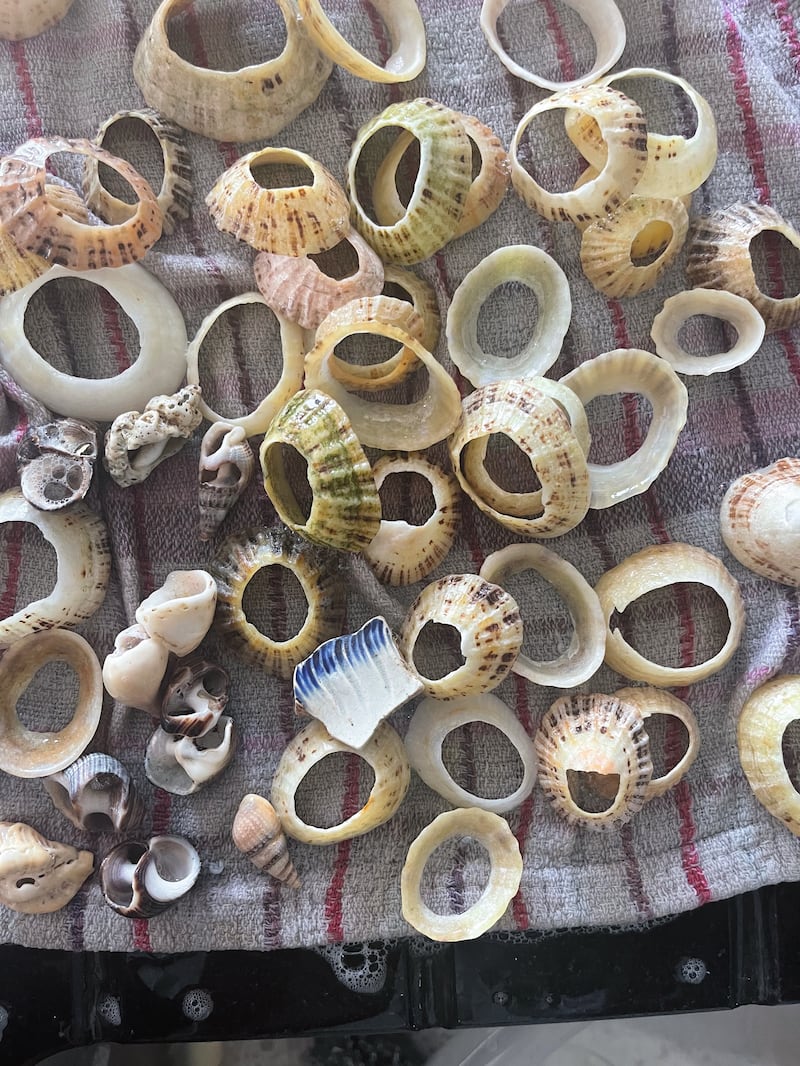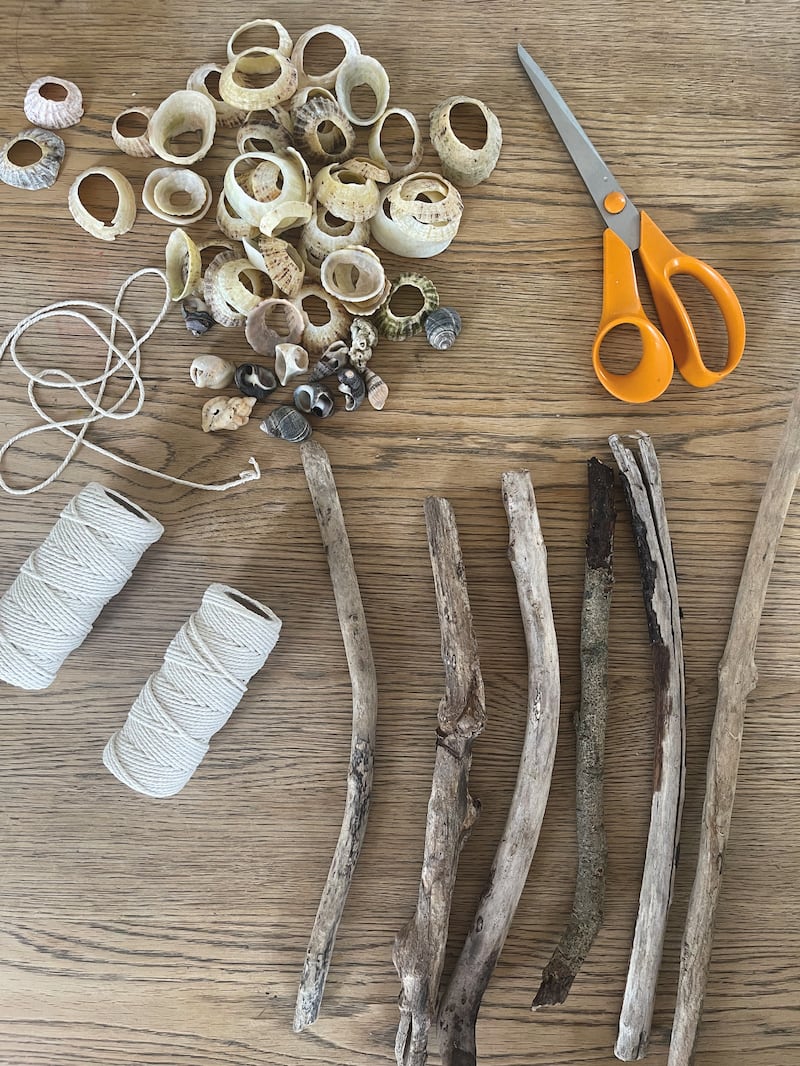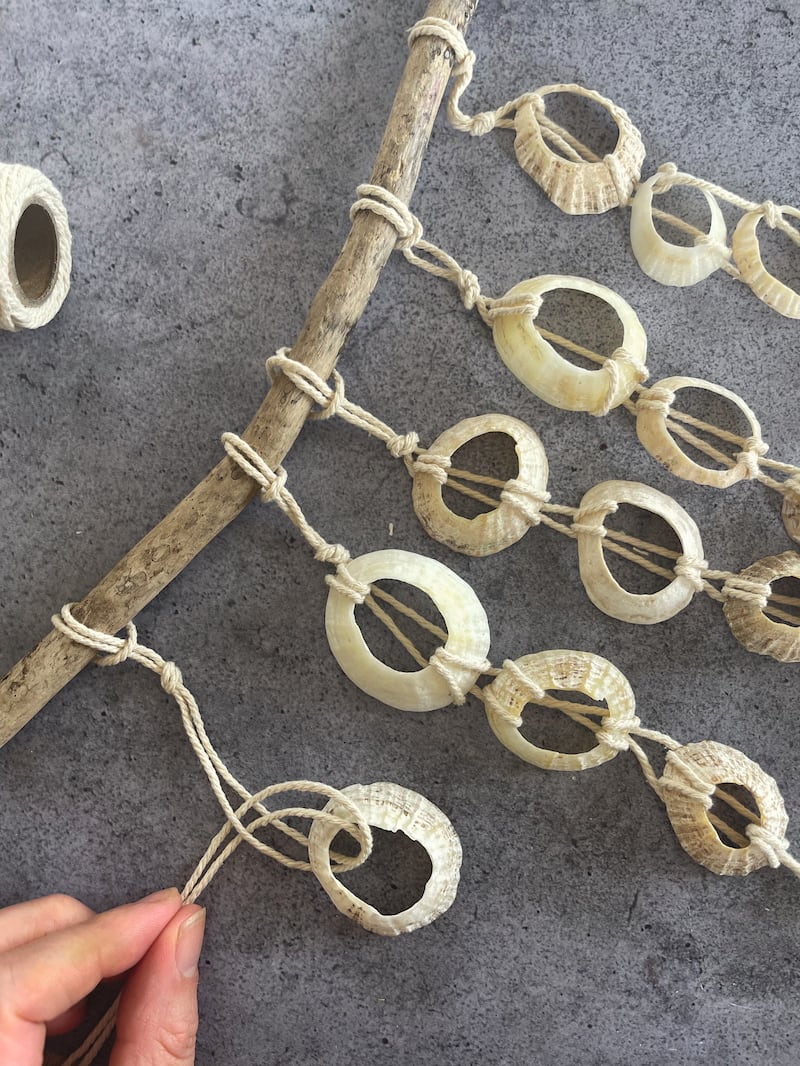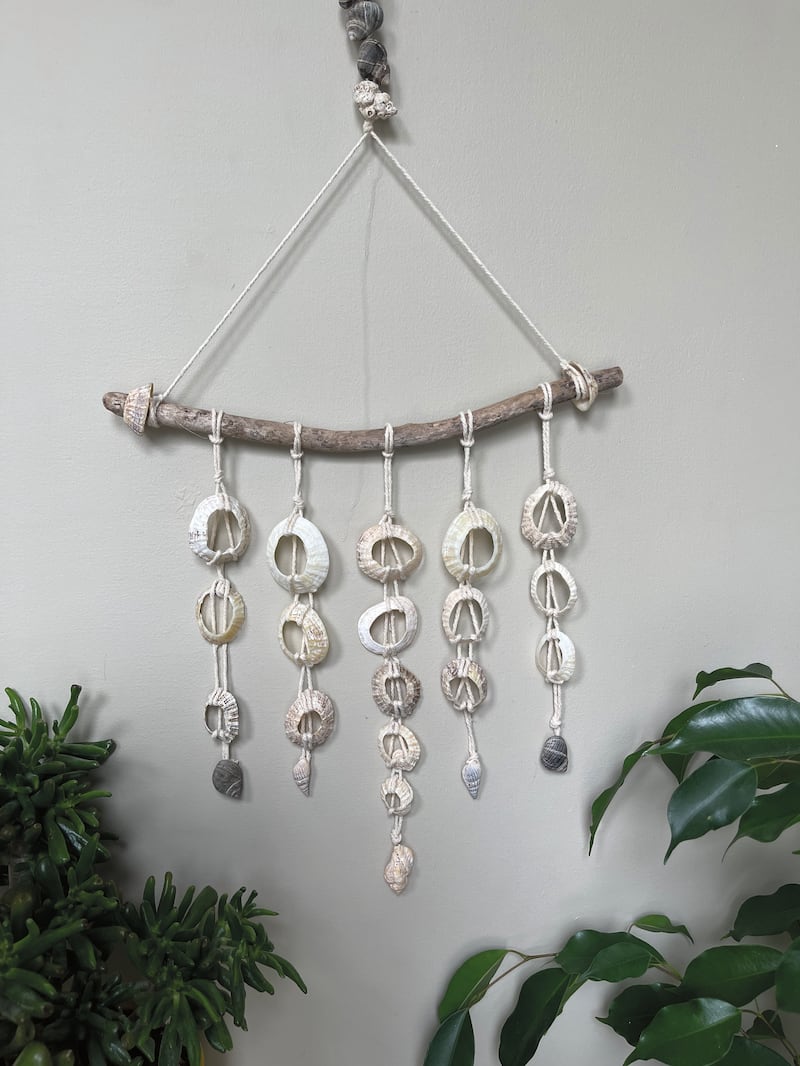It’s a natural human urge to want to make something. Feathering our nests like little birds collecting leaves and twigs. Part of the appeal with crafting is that it can be so basic. Making something, you have to slow down. You have to side step from the slip stream, take a rain check on the rat race and concentrate so you don’t slip a stitch. You can feel your heartbeat as you gingerly line up two sections of fabric.
I love the process of knitting blankets with natural fibres, sewing patchwork cushions with fabric remnants, upcycling furniture, dying fabric to give clothes a new lease of life, shaping clay to form bowls or trinket dishes. Making and crafting with my own hands, and seeing something come from nothing. A ball of wool transformed into something wearable, cosy and beautiful. Twigs and leaves collected on an autumn walk woven together to make a gorgeous wreath.
Perhaps it’s a result of growing up in rural Ireland in the 1980s when we really valued everything we had. I’m like a magpie spotting potential in things, squirrelling away materials that can be transformed into something someday. One Christmas my mother made us the most beautiful blanket and pillow sets for our dolls from my sister’s old coat. She bought red ribbons to adorn them with bows; we just loved them, and our cabbage patch kids were very cosy. I remember her staying up the night before one of our communion days to finish knitting everyone’s matching cardigans.


It was a necessity then, but now it’s a luxury to be able to craft and make things. It’s probably cheaper to buy a cardigan than buy the materials to make one. I’ll admit I’ve never knitted a cardigan for one of my children; I prefer to dip in and out, and a cardigan seems like too big a commitment. My sister Maeve can knit a jumper in a matter of days, but I don’t have the patience.
Actor Armie Hammer resurfaces as host of celebrity podcast
Heart-stopping Halloween terror: 13 of cinema’s greatest jump scares
Doctor Odyssey’s core message: just imagine Pacey from Dawson’s Creek holding you tight and saying, ‘Shhh, it’s okay’
Conor Niland’s The Racket nominated for William Hill Sports Book of the Year
Before I had my children, I always had a work in progress. Something to crochet, lino cuttings to finish, flowers drying or felt decorations in need of stitching. When I had my kids, it all fell into the background; there was no time to master macramé. We had all three beautiful babies quite close together and it felt like quite a blur. Any arts and crafts materials were stuffed into the spare room. My ever-curious middle child got his fingers stuck in the sewing machine one day when I took it out to mend something. So it was all put out of reach up high for several years, until my youngest demanded I teach her to sew. I pulled out some felt and we made a simple purse. We both enjoyed the process and it was such great time spent together. Gradually I began to show them how to potato-print, weave, braid flower crowns and papier-mâché. Their curiosity and creativity unearthed my own again, reawakening a drive to craft, make and do.
This intensified while homeschooling during the pandemic when all we had was time, sitting in the sun-soaked garden in July stringing daisy chains, or making blackberry jam after an afternoon of picking. We were outdoors so much, with time to notice the changing seasons around us. Through seasonal crafts and projects, we gained a renewed sense of wonder and connection to the natural world. It’s something I’ve worked to hold on to since the world reopened and life got busy again.
The Homemade Year is my new handbook for creativity, guided by the Irish seasons. I didn’t realise until I held a copy in my hands how big it is — more than 300 pages with at least six projects for each month of the year, that will give you ideas for celebrations, self-care, activities to do with kids, ways to decorate your home and seasonal recipes, all guided by the Irish calendar year, from St Brigid’s crosses in February, to yule logs in December. My aim was to design projects that can be made with what you have, without any special equipment. There are guides to making your own herb-infused cleaning vinegars, oil diffusers, a yoga mat spray, envelopes, potato-printed wrapping paper and jewellery trees. The end products are lovely, but the process of making them is even more rewarding. It’s all about making the most of what we’ve got, inspiring creativity off-screen, slowing down, reconnecting with the natural world and making the everyday moments special.
Lilly Higgins is a food writer for The Irish Times. The Homemade Year is published by Gill Books.


Shell wall hanging
What you’ll need:
— Seashells
— Small hammer
— Twine or string
— Scissors
— Superglue
— One stick to hang the shells from
A mix of twine and found shells, this hanging holds on to the memory of summer beach days as we head into autumn. We stayed at the lovely Coulagh Bay Cottages on the Beara Peninsula in West Cork last summer, and there were lots of shell crafts and wall hangings that inspired this one. We always made crafts from shells when we were children, stacking them on top of one another to make little mice, trees and mermaids. My own children love the water so much. Wetsuits or not, they spend hours swimming and then dig moats, build sandcastles and trenches along the sandy beaches. Once they’re cosy and dressed, we barbecue sausages and everyone has hotdogs, followed by toasted marshmallows. It’s an August tradition before they head back to school. This is a lovely project to do with all the shells that end up coming home in buckets and bags.
Method
1. Plan out your design first. Try to make it symmetrical, or do your own design.
2. Tap the top of each shell with a small hammer to create a hole to thread the twine through.
3. Thread the shells on to the string and tie a knot after each one is added. Glue any shells that won’t stay in place the way you want.
4. Tie each string of shells on to the stick. Tie some twine to the stick to hang it.





